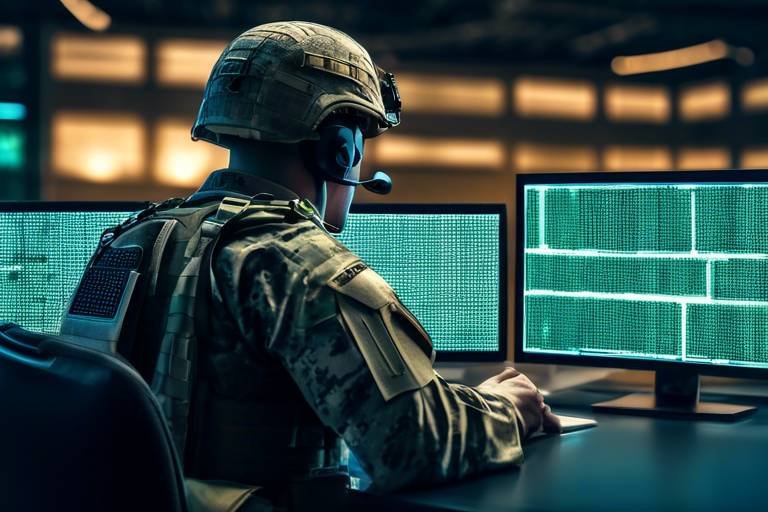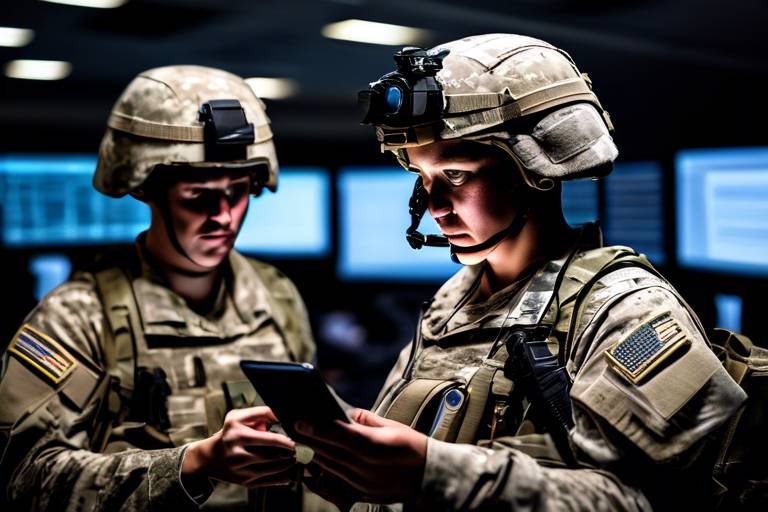Exploring the Future of Unmanned Aerial Combat Systems
The world of military technology is evolving at an unprecedented pace, and at the forefront of this transformation are Unmanned Aerial Combat Systems (UACS). These sophisticated machines are not just tools of warfare; they are changing the very fabric of how conflicts are fought and won. As we delve into the future of UACS, it's essential to understand their advancements, challenges, and implications for military strategies and global security. Imagine a battlefield where decisions are made in real-time by machines equipped with artificial intelligence, capable of executing complex missions without human intervention. This scenario is not a distant dream but a reality that is rapidly approaching.
To grasp the significance of UACS, one must first consider their historical evolution. From the early days of remote-controlled drones used for reconnaissance to today's advanced combat drones capable of carrying out precision strikes, the journey has been nothing short of remarkable. Key milestones in this evolution include the introduction of GPS technology, which enhanced navigation and targeting, and the integration of advanced sensors that provide unparalleled situational awareness. Each of these breakthroughs has paved the way for the sophisticated systems we see today, which are capable of operating in diverse and challenging environments.
But what does the future hold for UACS? The answer lies in the technological innovations that are driving their development. Recent advancements in artificial intelligence, sensor technology, and weaponry are transforming UACS into highly autonomous systems that can perform complex missions with remarkable precision. However, this leap in technology also raises important ethical and operational considerations. For instance, as machines become more capable of making decisions, questions arise about who is ultimately responsible for their actions. This brings us to the critical role of human oversight in UACS operations.
As we explore the implications of fully autonomous UACS, we must confront the uncomfortable reality of machines making life-and-death decisions. This shift necessitates a reevaluation of military ethics and operational protocols. How do we ensure accountability when a machine decides to engage a target? This is where the need for human oversight becomes paramount. Maintaining a balance between autonomy and necessary human intervention is essential to ensure ethical compliance and operational integrity.
Moreover, innovative sensor technologies are enhancing the capabilities of UACS, enabling them to gather and analyze data in real-time. Advanced imaging and radar systems provide critical information that improves situational awareness and target identification. This level of detail can significantly increase the success rates of missions, especially in complex environments where traditional methods might fail. The integration of these technologies not only enhances operational effectiveness but also poses challenges regarding data security and the potential for misuse.
As we look towards the future, the strategic implications of UACS cannot be overlooked. Their integration into military strategies is reshaping global power dynamics and altering traditional warfare tactics. Nations are compelled to reassess their defense postures in response to these emerging threats, leading to new operational concepts and strategies. The proliferation of UACS raises significant global security concerns, including the potential for arms races and increased surveillance capabilities. This necessitates international dialogue on regulation and control to prevent misuse in conflict zones.
In conclusion, the future of Unmanned Aerial Combat Systems is not just a technological evolution; it is a profound shift in how we understand warfare and global security. As advancements continue to unfold, we must remain vigilant in addressing the ethical, operational, and strategic challenges that accompany these powerful systems. The landscape of modern warfare is changing, and with it, the very nature of conflict itself.
- What are Unmanned Aerial Combat Systems (UACS)?
UACS are advanced military drones designed for combat operations, capable of executing missions autonomously or under human control. - How does artificial intelligence impact UACS?
AI enhances decision-making processes, allowing UACS to analyze data in real-time and improve mission outcomes. - What are the ethical concerns related to UACS?
Ethical concerns include accountability for decisions made by autonomous systems and the implications of machines making life-and-death choices. - How do sensor technologies improve UACS?
Advanced sensor technologies provide enhanced situational awareness and target identification, significantly increasing mission success rates. - What are the global security implications of UACS?
The proliferation of UACS raises concerns about arms races, surveillance capabilities, and the potential for misuse in conflict zones.
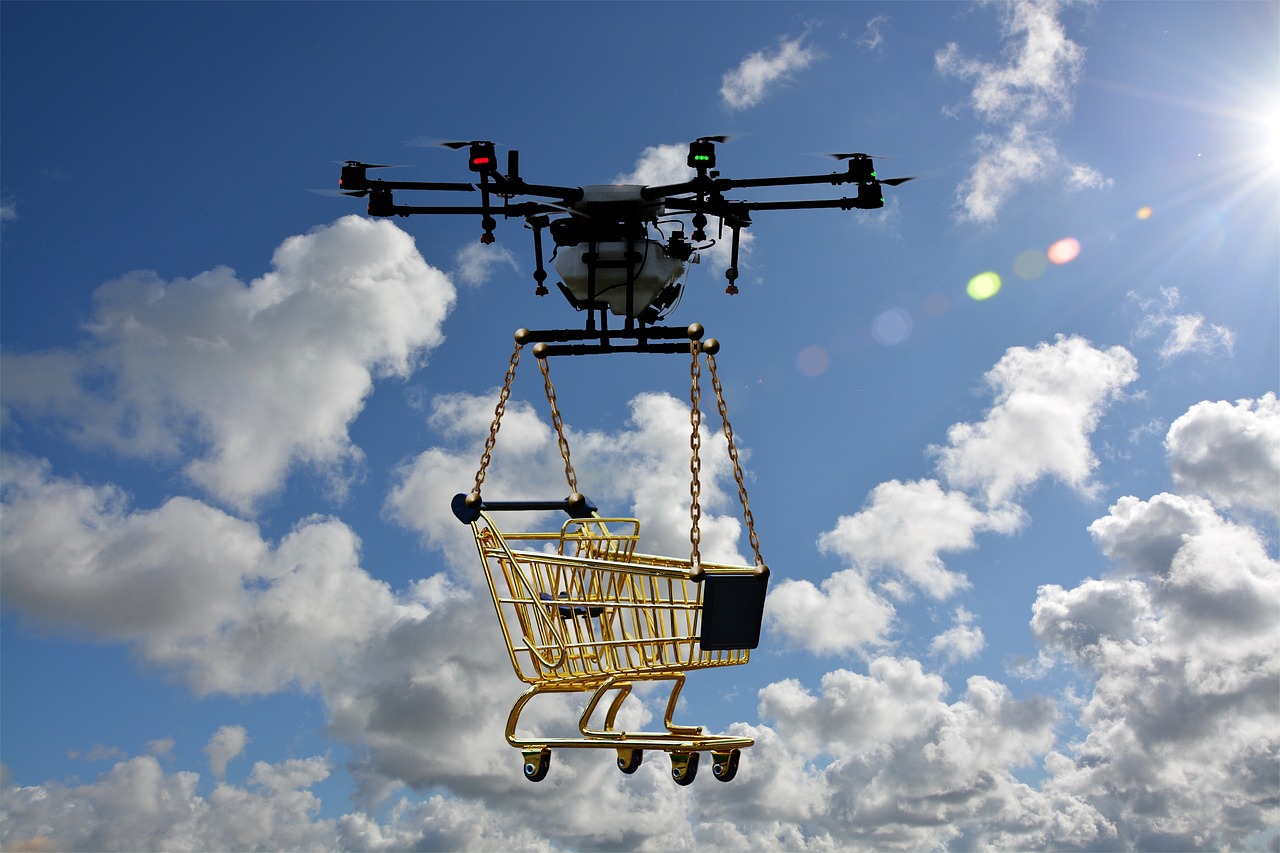
The Evolution of Unmanned Aerial Combat Systems
The journey of Unmanned Aerial Combat Systems (UACS) is nothing short of fascinating, representing a significant leap in military technology. From their humble beginnings in the early 20th century to the sophisticated systems we see today, UACS have undergone a remarkable transformation. Initially, these systems were primarily used for reconnaissance, but as technology advanced, their applications expanded dramatically, leading to their current role as pivotal assets in modern warfare.
One of the key milestones in the evolution of UACS was the development of the RQ-1 Predator in the 1990s. This drone was revolutionary at the time, equipped with the ability to conduct surveillance missions and, later, armed with precision-guided munitions. The Predator set the stage for the next generation of drones, showcasing the potential for unmanned systems to engage in combat effectively. Following the Predator, the MQ-9 Reaper emerged, boasting enhanced capabilities such as longer flight times, greater payload capacity, and advanced sensor systems, which allowed for more complex missions.
As we moved into the 21st century, the integration of advanced technologies became a game changer for UACS. The introduction of artificial intelligence, improved sensor technologies, and advanced communication systems has elevated the effectiveness of these unmanned systems. For instance, AI algorithms now enable drones to analyze vast amounts of data in real-time, allowing for quicker decision-making on the battlefield. This capability not only enhances mission success rates but also reduces the risk to human operators.
Moreover, the evolution of UACS has not been without its challenges. As these systems become more autonomous, ethical dilemmas arise regarding their use in combat. Questions about accountability and the moral implications of machines making life-and-death decisions are at the forefront of military discussions. The military must grapple with issues such as human oversight and the need for robust operational protocols to ensure that ethical standards are maintained in the face of rapid technological advancements.
To better understand the evolution of UACS, let’s take a look at a brief timeline of key developments:
| Year | Development | Description |
|---|---|---|
| 1916 | First UAV | The Kettering Bug, an early cruise missile prototype, marks the inception of unmanned flight. |
| 1995 | RQ-1 Predator | First drone to be armed, used for surveillance and combat operations. |
| 2007 | MQ-9 Reaper | Introduced with advanced sensors and weaponry, enhancing combat capabilities. |
| 2010s | AI Integration | Artificial intelligence begins to play a significant role in decision-making processes. |
As we look to the future, it is clear that UACS will continue to evolve, influenced by ongoing technological innovations and the changing landscape of warfare. The integration of these systems into military strategies will not only redefine combat operations but also challenge traditional notions of warfare and ethics. The evolution of UACS is a testament to human ingenuity and the relentless pursuit of enhancing our capabilities in protecting national security.
- What are unmanned aerial combat systems?
UACS are drone systems designed to carry out combat missions without a human pilot on board. They can be used for surveillance, reconnaissance, and direct combat operations. - How have UACS changed modern warfare?
UACS have revolutionized modern warfare by providing enhanced surveillance, reducing risks to human soldiers, and enabling precision strikes with minimal collateral damage. - What ethical concerns are associated with UACS?
Ethical concerns include accountability for actions taken by autonomous systems, the potential for misuse in conflict zones, and the implications of machines making life-and-death decisions.

Technological Innovations Driving UACS
In the rapidly evolving landscape of modern warfare, unmanned aerial combat systems (UACS) are at the forefront of technological innovation. These systems are not just flying machines; they are sophisticated platforms that leverage cutting-edge advancements in various fields to enhance their operational capabilities. From artificial intelligence to advanced sensor technologies, each innovation plays a pivotal role in redefining how military operations are conducted.
One of the most significant breakthroughs is in the realm of artificial intelligence (AI). With the integration of AI, UACS can analyze vast amounts of data in real-time, improving decision-making processes. Imagine a drone that can not only identify targets but also assess threats and make tactical decisions in the blink of an eye. This level of autonomy is transforming combat scenarios, allowing military forces to respond to threats more swiftly than ever before. However, this raises critical questions about control and accountability—who is responsible when an AI makes a mistake?
Moreover, the sensor technologies employed in UACS have seen remarkable advancements. Modern drones are equipped with sophisticated imaging systems and radar technologies that provide unparalleled situational awareness. This capability enables operators to detect and identify targets with incredible precision, even in complex environments. For instance, the integration of multispectral sensors allows UACS to gather information across different wavelengths, enhancing their ability to operate day or night and under various weather conditions. The implications of these innovations are profound, as they increase mission success rates and minimize collateral damage.
Another area of innovation is the development of next-generation weaponry designed specifically for use with UACS. These weapons systems are often lighter, more precise, and capable of being deployed from greater distances. As a result, they allow for a more tactical approach to combat, where strikes can be executed with minimal risk to personnel. This shift not only alters how military engagements are conducted but also raises ethical considerations regarding the use of force and the potential for escalation in conflicts.
In summary, the technological innovations driving UACS are not just enhancing their capabilities; they are reshaping the entire landscape of military strategy. As these systems become more autonomous and capable, it is essential for military leaders and policymakers to engage in ongoing discussions about the implications of these advancements. Balancing the benefits of technology with ethical considerations will be crucial as we navigate the future of warfare.
- What are unmanned aerial combat systems (UACS)?
UACS are drone systems designed for military operations, capable of performing combat missions without a human pilot on board. - How does artificial intelligence enhance UACS?
AI improves decision-making by allowing UACS to analyze data in real-time, enhancing their operational effectiveness and responsiveness in combat scenarios. - What are the ethical concerns surrounding UACS?
The use of UACS raises questions about accountability, especially when machines make life-and-death decisions, necessitating careful consideration of military ethics. - What role do sensor technologies play in UACS?
Advanced sensors provide UACS with situational awareness and target identification capabilities, significantly improving mission success rates. - What future trends can we expect in UACS development?
Future developments may include further technological advancements, increased integration with manned systems, and evolving operational roles in military strategies.

Artificial Intelligence in UACS
Artificial Intelligence (AI) is not just a buzzword in today's tech-savvy world; it's a game-changer, especially when it comes to Unmanned Aerial Combat Systems (UACS). Imagine a battlefield where drones can analyze data in real-time, make split-second decisions, and adapt to rapidly changing scenarios without human intervention. Sounds like something out of a sci-fi movie, right? But this is becoming a reality, and it’s revolutionizing how military operations are conducted.
At the heart of this transformation is the ability of AI to enhance the decision-making processes of unmanned systems. These systems can process vast amounts of data from various sources, including satellite imagery, ground sensors, and even social media feeds, to create a comprehensive picture of the battlefield. This capability allows for improved mission outcomes by enabling UACS to identify threats and opportunities more effectively than ever before. However, with great power comes great responsibility, and the integration of AI into military operations raises profound questions about control and accountability.
One of the most pressing concerns is the autonomous decision-making aspect of AI in UACS. As these systems become more advanced, there’s a growing discussion about the implications of machines making life-and-death decisions. For instance, consider a scenario where a drone is tasked with identifying and neutralizing a threat. If it encounters a situation where distinguishing between combatants and civilians is critical, can we trust an algorithm to make that call? This situation necessitates a reevaluation of military ethics and operational protocols.
Moreover, while AI can significantly enhance operational efficiency, it also raises the need for human oversight and control. Maintaining a human element in UACS operations is essential to ensure accountability and ethical compliance. The challenge lies in finding the right balance between allowing machines to operate autonomously and ensuring that human operators can intervene when necessary. This dynamic is crucial in critical situations where the stakes are incredibly high.
To further illustrate the importance of human oversight, consider the following table that outlines the pros and cons of AI in UACS:
| Pros | Cons |
|---|---|
| Enhanced decision-making speed | Potential for ethical dilemmas |
| Increased operational efficiency | Risk of malfunction or misinterpretation |
| Ability to process vast amounts of data | Loss of human control in critical situations |
In conclusion, while AI is set to redefine the landscape of UACS, it’s essential to approach its integration with caution. The balance between autonomy and human oversight will be pivotal in ensuring that these systems are used responsibly and ethically. As we venture further into this new era of warfare, ongoing discussions and regulations will be necessary to navigate the complexities introduced by AI in military operations.
- What role does AI play in UACS? AI enhances decision-making and operational efficiency in unmanned aerial systems.
- Are there ethical concerns regarding AI in military applications? Yes, the potential for autonomous decision-making raises significant ethical questions.
- How can we ensure accountability in AI-driven UACS? Maintaining human oversight is crucial to ensure ethical compliance and accountability.

Autonomous Decision-Making
The emergence of in unmanned aerial combat systems (UACS) is nothing short of revolutionary. Imagine a battlefield where machines can analyze situations and make tactical decisions in real-time, without waiting for human input. Sounds like science fiction, right? But this is quickly becoming a reality as technology advances. The capability of UACS to operate independently raises profound questions about the nature of warfare and the ethical implications of allowing machines to make life-and-death decisions.
At its core, autonomous decision-making involves the use of sophisticated algorithms and artificial intelligence (AI) to process vast amounts of data. These systems can evaluate threats, assess environments, and choose the best course of action almost instantaneously. This speed and efficiency can be a game-changer in combat scenarios where every second counts. However, it also leads to a chilling consideration: who is responsible when a machine makes a mistake? The potential for errors in judgment is a stark reminder that while technology can enhance our capabilities, it also introduces new risks.
Moreover, the shift towards autonomy necessitates a reevaluation of military ethics. Historically, soldiers have been trained to make decisions based on a combination of instinct, training, and ethical considerations. With machines taking on this role, we must ask ourselves: Can we trust algorithms to uphold the same standards? The debate surrounding this issue is not merely academic; it has real-world implications for how we conduct warfare and how we define accountability in conflict.
To illustrate the complexities of autonomous decision-making in UACS, consider the following factors:
- Speed of Response: Autonomous systems can react faster than human operators, potentially neutralizing threats before they escalate.
- Data Processing: AI can analyze patterns and predict outcomes based on historical data, leading to more informed decisions.
- Ethical Dilemmas: Machines lack the moral reasoning that humans possess, raising concerns about their ability to make ethical decisions in combat.
As military organizations around the globe increasingly adopt UACS, the implications of autonomous decision-making will continue to unfold. It is crucial for policymakers, military leaders, and technologists to engage in ongoing discussions about the balance between autonomy and human oversight. The future of warfare may depend on our ability to navigate these complex ethical landscapes while harnessing the benefits of technological advancements.
- What are unmanned aerial combat systems (UACS)? UACS are military drones designed for combat operations, capable of conducting missions without direct human control.
- How does autonomous decision-making work in UACS? Autonomous decision-making utilizes AI and algorithms to analyze data and make tactical decisions in real-time, often without human intervention.
- What are the ethical concerns surrounding autonomous UACS? The primary concerns include accountability for decisions made by machines and the potential for errors in judgment that could lead to unintended consequences.
- Will autonomous UACS replace human soldiers? While UACS can enhance military capabilities, they are not likely to fully replace human soldiers, as human oversight remains crucial in complex ethical situations.
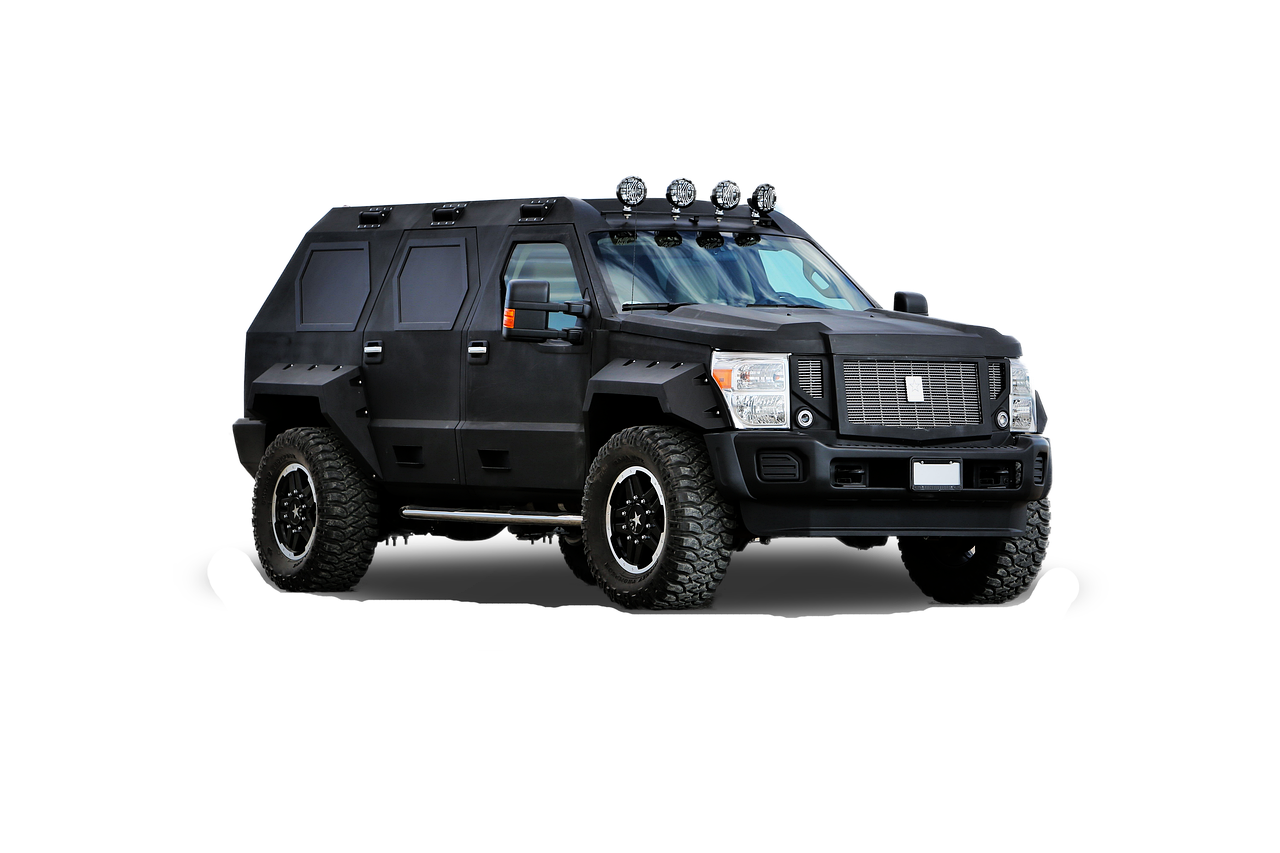
Human Oversight and Control
In the rapidly evolving landscape of unmanned aerial combat systems (UACS), the question of human oversight and control becomes increasingly critical. As these systems gain more autonomy, the balance between machine intelligence and human intervention must be carefully managed. Imagine a scenario where a drone, equipped with advanced artificial intelligence, is tasked with identifying and engaging targets without direct human input. While this may sound like a scene from a futuristic movie, it is a reality that military strategists are grappling with today.
One of the primary concerns surrounding autonomous UACS is the potential for machines to make life-and-death decisions in the heat of battle. This leads us to ponder: should we trust machines with such grave responsibilities? The implications of allowing AI to decide who lives and who dies are profound and troubling. It’s not just about the technology; it’s about the ethical ramifications of delegating such authority to algorithms. As we push the boundaries of what these systems can do, we must also consider the moral responsibilities that come with them.
To ensure that UACS operate within acceptable ethical boundaries, maintaining human oversight is essential. This oversight can take various forms, from direct control to more nuanced forms of supervision. For instance, while a drone may be able to conduct surveillance autonomously, a human operator should still have the final say when it comes to engaging a target. This layer of human intervention helps to mitigate risks associated with errors in judgment that may arise from machine learning algorithms.
Moreover, the integration of human oversight in UACS operations is not merely a safety net; it is also a means of fostering accountability. In situations where autonomous systems are deployed, it is crucial to establish clear lines of responsibility. Who is accountable if a drone mistakenly targets civilians? By ensuring that humans remain in the loop, we can better navigate the complex ethical landscape of modern warfare. The challenge lies in finding the right balance between leveraging the strengths of AI and retaining the necessary human touch in decision-making processes.
As military organizations around the world adopt UACS, they must also develop robust protocols that define the extent and nature of human involvement. This includes training personnel not only in operating these advanced systems but also in understanding the ethical implications of their use. It is essential to foster a culture of responsibility among operators, ensuring they are prepared to make informed decisions in high-stakes environments.
In conclusion, while the potential of UACS is vast, the importance of human oversight cannot be overstated. As we continue to explore the capabilities of these systems, it is imperative that we prioritize ethical considerations and accountability. By doing so, we can harness the power of technology while safeguarding our moral responsibilities in warfare.
- What is the role of human oversight in UACS?
Human oversight ensures that ethical standards are maintained and that decisions made by autonomous systems are subject to human judgment, preventing potential errors or misuses. - Can UACS operate completely autonomously?
While UACS can perform many functions autonomously, it is crucial to have human intervention, especially in critical decision-making scenarios to ensure accountability. - What are the ethical implications of using AI in combat?
The ethical implications include concerns about accountability for actions taken by autonomous systems and the potential for machines to make life-and-death decisions without human oversight. - How can military organizations ensure responsible use of UACS?
By developing protocols for human oversight, providing adequate training for operators, and fostering a culture of responsibility, military organizations can promote the ethical use of UACS.

Sensor Technologies Enhancing UACS
The realm of Unmanned Aerial Combat Systems (UACS) has been significantly transformed by the advent of advanced sensor technologies. These innovations play a pivotal role in enhancing the operational capabilities of unmanned systems, allowing them to perform complex missions with unprecedented efficiency and accuracy. Imagine piloting a drone that can "see" and "hear" better than any human pilot—this is the reality brought about by modern sensor technologies.
At the heart of UACS operations are sophisticated imaging systems and radar technologies that provide real-time situational awareness. These sensors enable unmanned systems to detect, identify, and track targets with remarkable precision. For instance, advanced electro-optical and infrared sensors can capture high-resolution images even in low-light conditions, while synthetic aperture radar (SAR) can penetrate cloud cover and provide detailed ground mapping. Such capabilities are essential for mission success, especially in environments where visibility is compromised.
Moreover, the integration of multi-sensor fusion technology allows UACS to combine data from various sources, enhancing overall situational awareness. This technology processes information from different sensors, providing operators with a comprehensive view of the battlefield. It’s akin to assembling pieces of a puzzle; when combined, they create a clearer picture of the operational environment. This is crucial for making informed decisions in real-time and improving mission outcomes.
However, the advancements in sensor technologies are not without their challenges. As UACS become more capable, the amount of data generated increases exponentially. This raises questions about data management and analysis. Operators must be equipped with the right tools to sift through vast amounts of information quickly and effectively. Additionally, there are concerns regarding privacy and surveillance, as enhanced sensor capabilities could lead to misuse in civilian areas.
In summary, the evolution of sensor technologies is a game changer for UACS, enhancing their capabilities and effectiveness in combat scenarios. As these technologies continue to develop, they will undoubtedly shape the future of military operations, pushing the boundaries of what unmanned systems can achieve. The implications of these advancements extend beyond the battlefield, prompting discussions on ethical considerations and the need for robust regulatory frameworks to govern their use.
- What types of sensors are commonly used in UACS?
UACS typically utilize a combination of electro-optical, infrared, and radar sensors to enhance their operational capabilities. - How do sensor technologies improve mission success rates?
By providing real-time situational awareness and target identification, advanced sensors enable UACS to operate more effectively in complex environments. - What are the ethical concerns associated with advanced sensor technologies?
Concerns include privacy issues, potential misuse in civilian areas, and the need for accountability in military operations. - How does multi-sensor fusion work?
Multi-sensor fusion combines data from various sensors to create a comprehensive operational picture, aiding in decision-making and mission planning.
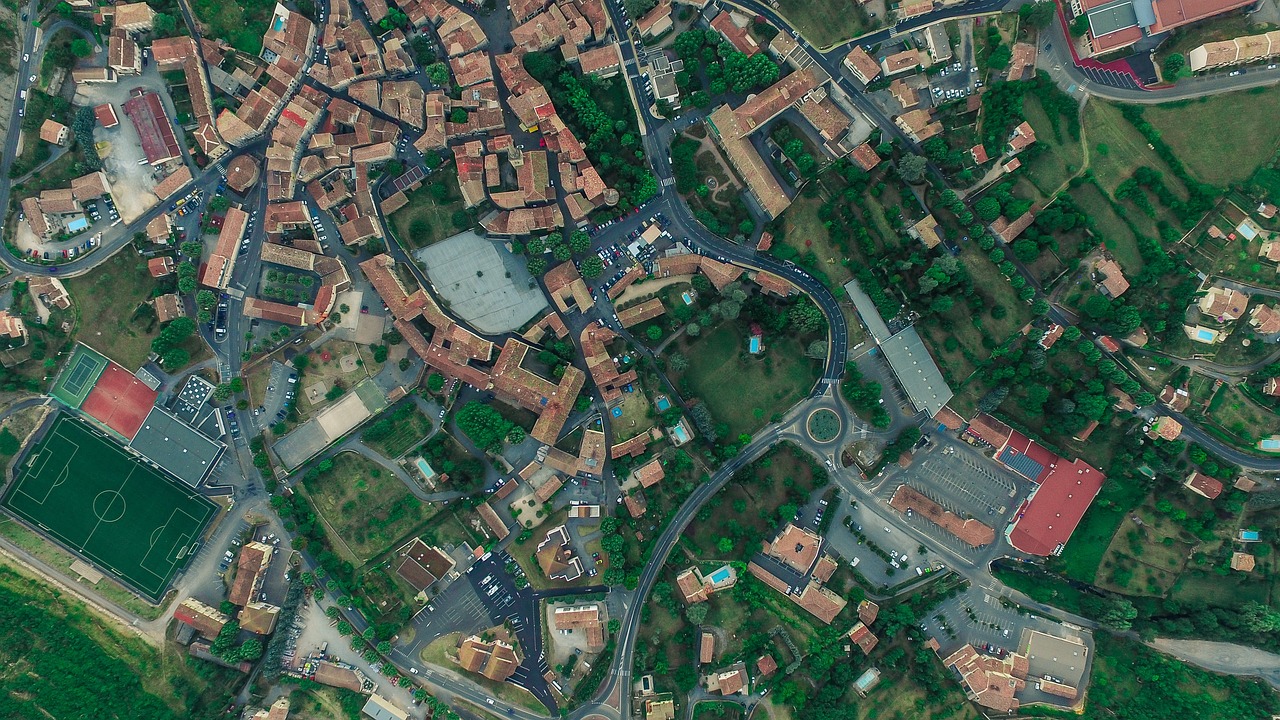
Strategic Implications of UACS
The integration of Unmanned Aerial Combat Systems (UACS) into military strategy is not just a technological upgrade; it's a seismic shift in how nations approach warfare. These systems are changing the rules of engagement and redefining what it means to be a military power in the 21st century. Imagine a chess game where the pieces can move on their own, making decisions based on complex algorithms. This is the reality we face with UACS, as they introduce new operational tactics that compel countries to rethink their defense strategies.
One of the most significant implications of UACS is the alteration of traditional warfare tactics. With the ability to conduct surveillance, gather intelligence, and engage targets without risking human lives, militaries can now operate in a more covert and efficient manner. This shift not only enhances operational capabilities but also raises questions about the ethical dimensions of warfare. For instance, how do we hold accountable a machine that makes decisions on the battlefield? This dilemma necessitates a reevaluation of military doctrines and operational protocols to ensure that human oversight remains a priority.
Furthermore, the presence of UACS on the battlefield can lead to an arms race among nations. Countries may feel pressured to develop their own unmanned systems to maintain parity with adversaries, which could escalate tensions globally. The potential for misuse in conflict zones is another pressing concern, as these systems can be deployed in ways that violate international norms. The implications stretch beyond military tactics; they encompass global security and diplomatic relations. The international community must engage in dialogue to establish regulations and frameworks governing the use of UACS, ensuring these technologies are not misused.
In terms of military doctrine, UACS are reshaping how armed forces train and prepare for conflict. Traditional training methods may no longer suffice as the nature of warfare evolves. The military must adapt by incorporating UACS into their operational planning and exercises. This requires not only technical expertise but also a shift in mindset regarding command and control structures. For example, the relationship between human operators and autonomous systems must be clearly defined to prevent confusion and ensure effective collaboration.
As we look to the future, the strategic implications of UACS will continue to unfold. The integration of these systems into military strategies will likely lead to a more complex and multifaceted battlefield. Nations that can effectively harness the power of UACS will gain a significant advantage, while those that lag behind may find themselves at a strategic disadvantage. The challenge lies in balancing the benefits of these technologies with the need for ethical considerations and accountability.
- What are Unmanned Aerial Combat Systems (UACS)?
UACS are unmanned vehicles designed for combat operations, capable of conducting missions without direct human control. - How do UACS impact military strategy?
UACS change traditional warfare tactics, enhance operational capabilities, and raise ethical questions about accountability in combat. - What are the global security concerns associated with UACS?
The proliferation of UACS can lead to arms races, increased surveillance, and potential misuse in conflict zones. - How should militaries adapt to the rise of UACS?
Militaries must integrate UACS into training and operational planning, redefining command structures and ensuring human oversight.

Impact on Military Doctrine
The integration of Unmanned Aerial Combat Systems (UACS) into military operations is not just a technological upgrade; it represents a profound shift in military doctrine. Traditionally, military strategies were heavily reliant on human decision-making and the presence of manned aircraft. However, with the rise of UACS, we are witnessing a transformation that compels military leaders to rethink their operational frameworks. This shift is akin to the transition from cavalry to armored vehicles in the early 20th century, where the very fabric of warfare was altered.
One of the most significant impacts of UACS on military doctrine is the introduction of new operational concepts. For instance, the ability of drones to conduct surveillance and strike missions without risking human lives has led to a greater emphasis on remote warfare. This not only changes how battles are fought but also influences the psychological aspect of warfare. When pilots are no longer in the cockpit, the stakes feel different, and decision-making processes can become more detached. As a result, military planners must adapt their strategies to account for the implications of conducting warfare from a distance.
Moreover, UACS are enhancing the concept of network-centric warfare. This approach emphasizes the importance of information sharing and real-time data analysis among various military branches. With UACS capable of gathering vast amounts of intelligence and relaying it instantaneously, commanders can make better-informed decisions on the battlefield. This has led to a more dynamic and fluid approach to military operations, allowing forces to adapt quickly to changing situations. The table below illustrates how UACS are reshaping different aspects of military doctrine:
| Aspect of Military Doctrine | Traditional Approach | UACS Impact |
|---|---|---|
| Decision-Making | Human-centric | Data-driven, real-time |
| Risk Assessment | High risk to personnel | Minimized risk to human life |
| Operational Flexibility | Static planning | Dynamic and adaptive |
| Engagement Rules | Strict engagement protocols | Potentially more aggressive tactics |
Additionally, the evolution of UACS necessitates a reevaluation of training and education within military institutions. Armed forces must prepare personnel not only to operate these advanced systems but also to understand the ethical implications of their use. This includes grappling with questions about accountability in the event of a failure or unintended consequences. The military must foster a culture that balances technological advancement with ethical considerations, ensuring that personnel are equipped to handle the complexities of modern warfare.
In summary, the impact of UACS on military doctrine is multi-faceted and profound. It challenges traditional paradigms, enhances operational capabilities, and introduces new ethical dilemmas. As military leaders navigate this new landscape, they must remain adaptable and forward-thinking, ready to embrace the changes that UACS bring to the future of warfare.
- What are Unmanned Aerial Combat Systems (UACS)?
UACS are advanced military drones designed for combat operations, capable of conducting missions without a human pilot on board. - How do UACS affect military strategy?
UACS alter military strategies by enabling remote warfare, enhancing data-driven decision-making, and introducing new operational concepts. - What ethical concerns are associated with UACS?
Key ethical concerns include accountability for decisions made by autonomous systems and the potential for increased aggression in warfare. - Will UACS replace manned aircraft?
While UACS are becoming increasingly prevalent, it is likely that they will complement rather than completely replace manned aircraft in military operations.

Global Security Concerns
The rise of unmanned aerial combat systems (UACS) has introduced a myriad of that cannot be overlooked. As nations invest in these advanced technologies, the potential for misuse and escalation of conflicts becomes increasingly pronounced. One of the most pressing issues is the risk of an arms race. Countries are not only racing to develop their own UACS but are also attempting to outdo one another in terms of capabilities and sophistication. This competition can lead to a destabilizing effect on international relations, where nations feel compelled to enhance their military arsenals to maintain a perceived balance of power.
Moreover, the surveillance capabilities that UACS provide can be a double-edged sword. While they are invaluable for intelligence gathering and reconnaissance, they also raise concerns about privacy and the potential for abuse by state and non-state actors alike. Imagine a world where every move is monitored by drones equipped with advanced imaging technology; this could lead to a significant erosion of civil liberties. The ethical implications of using UACS for surveillance purposes are profound, and they necessitate a robust discussion among global leaders and policymakers.
In conflict zones, the deployment of UACS can lead to unintended consequences. The precision of these systems, often touted as a significant advantage, can also result in collateral damage that affects innocent civilians. This raises ethical questions about the morality of using machines to conduct warfare without human intervention. The potential for civilian casualties is a concern that must be addressed through stringent operational protocols and accountability measures.
Furthermore, the proliferation of UACS could lead to non-state actors acquiring these technologies, which poses a significant threat to global security. The possibility of terrorist organizations or rogue states utilizing UACS for their own agendas is alarming. This scenario highlights the urgent need for international regulations governing the development, sale, and use of unmanned systems. Without a cohesive global framework, the risk of these technologies falling into the wrong hands remains high.
As we navigate these complex challenges, the international community must engage in open dialogue to establish norms and regulations surrounding UACS. This includes discussions on ethical considerations in military operations, the need for transparency, and the importance of maintaining human oversight in critical decision-making processes. The future of warfare is evolving, and with it, our approach to security must adapt to ensure a stable and peaceful world.
- What are unmanned aerial combat systems (UACS)?
UACS are advanced military drones designed for combat operations, capable of carrying out missions without direct human control. - How do UACS impact global security?
The proliferation of UACS raises concerns about arms races, surveillance, civilian casualties, and the potential for misuse by non-state actors. - What ethical considerations are associated with UACS?
Ethical concerns include the morality of machines making life-and-death decisions, the potential for collateral damage, and the need for accountability in military operations. - What steps can be taken to regulate UACS?
International dialogue and agreements on the development, sale, and use of UACS are essential to prevent misuse and ensure global security.
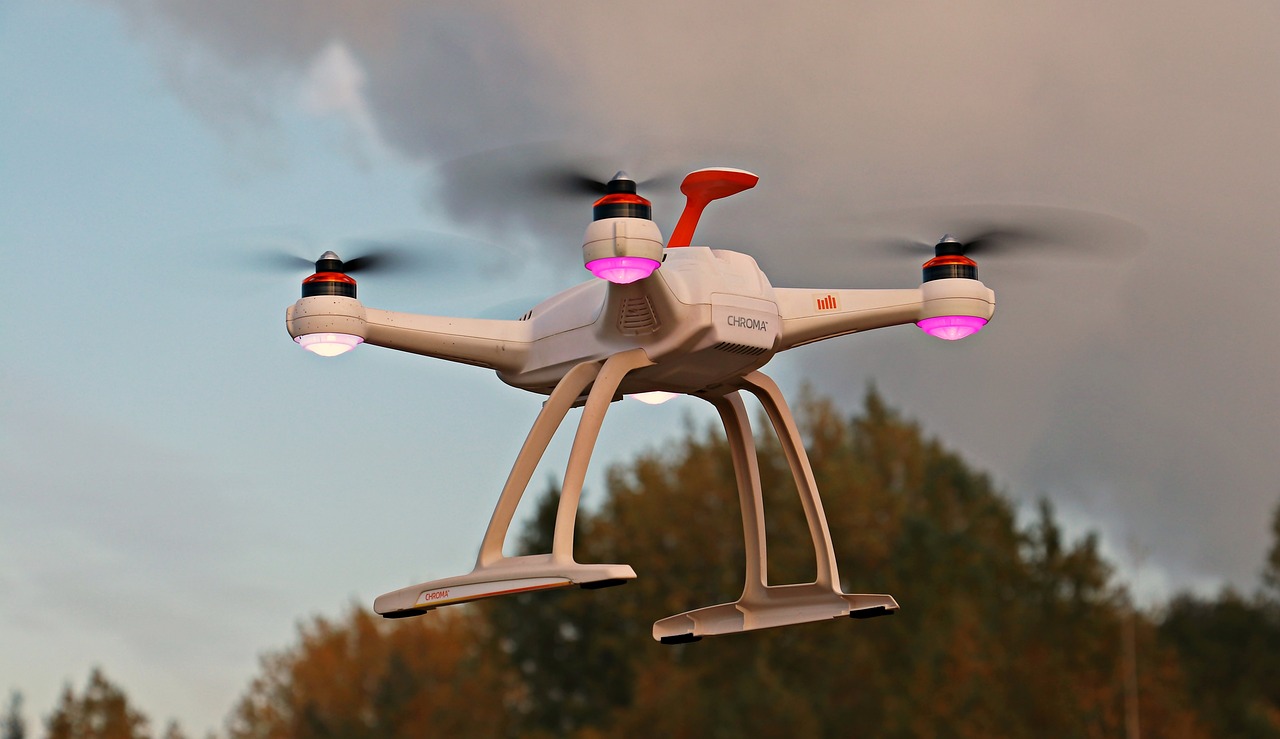
Future Trends in UACS Development
The horizon of Unmanned Aerial Combat Systems (UACS) is rapidly evolving, driven by a confluence of technological advancements and strategic military needs. As we gaze into the future, several key trends are poised to redefine the landscape of aerial warfare. One of the most significant developments is the integration of machine learning and artificial intelligence into UACS. These technologies are not just enhancing the capabilities of drones but are fundamentally changing how they operate in combat scenarios. Imagine a drone that can learn from its environment, adapt its strategies in real-time, and make decisions with minimal human intervention. This level of sophistication is not far off and could lead to a new era of warfare where speed and adaptability become paramount.
Another trend is the increasing collaboration between manned and unmanned systems. As military forces recognize the complementary strengths of both types of aircraft, we can expect to see more integrated operations. For instance, manned aircraft could provide command and control, while UACS execute missions with precision and efficiency. This synergy could enhance overall mission effectiveness, allowing for complex operations that leverage the best of both worlds. Such integration raises fascinating questions about the roles of pilots and operators, as they will need to adapt to new operational paradigms.
Moreover, the future of UACS will likely see a surge in swarming technology. This concept involves deploying numerous drones that can communicate and coordinate with each other to overwhelm adversaries. Picture a swarm of bees, each drone acting independently yet harmoniously towards a common goal. Such capabilities could drastically alter combat dynamics, making it challenging for traditional defenses to respond effectively. However, this also brings forth ethical considerations, as the potential for mass destruction increases with the scale of deployment.
In addition to these technological advancements, we cannot overlook the regulatory landscape surrounding UACS. As these systems become more prevalent, international dialogues on their use will become increasingly critical. Nations will need to establish norms and agreements to prevent misuse and ensure accountability. The risk of an arms race in UACS technology could lead to destabilization, prompting the need for strategic arms control discussions similar to those seen during the Cold War.
Furthermore, the development of advanced sensor technologies will play a crucial role in the future of UACS. Innovations in imaging, radar, and communication systems will enhance situational awareness and target identification. For example, UACS equipped with cutting-edge sensors will be able to operate effectively in complex environments, such as urban warfare, where traditional systems might struggle. This capability will not only improve mission success rates but also reduce collateral damage, a critical consideration in modern warfare.
As we look ahead, it’s essential to consider the ethical implications of these advancements. With machines taking on more responsibilities, questions about accountability and moral decision-making in combat become even more pressing. Military leaders and policymakers will need to engage in thoughtful discussions about the limits of autonomy and the necessity of human oversight. Balancing technological innovation with ethical considerations will be a significant challenge moving forward.
- What are UACS? Unmanned Aerial Combat Systems (UACS) are military drones designed to perform combat missions without a human pilot on board.
- How is AI impacting UACS? AI enhances UACS by enabling real-time data analysis, improving decision-making processes, and increasing operational efficiency.
- What is swarming technology? Swarming technology involves deploying multiple drones that can communicate and coordinate with each other to achieve a common objective, enhancing tactical capabilities.
- What are the ethical concerns surrounding UACS? Ethical concerns include accountability in decision-making, the potential for misuse, and the implications of autonomous systems making life-and-death choices.
- How will UACS change military strategies? UACS will lead to new operational concepts, requiring militaries to adapt their training and planning to effectively incorporate these advanced technologies.
Frequently Asked Questions
- What are unmanned aerial combat systems (UACS)?
Unmanned Aerial Combat Systems (UACS) are advanced military drones designed for combat operations without a human pilot on board. They leverage cutting-edge technology, including artificial intelligence and sophisticated sensors, to carry out missions ranging from surveillance to targeted strikes, all while minimizing human risk on the battlefield.
- How has UACS evolved over time?
The evolution of UACS has been remarkable, starting from basic reconnaissance drones to highly autonomous systems capable of complex decision-making. Key milestones include the introduction of AI for real-time data analysis and advanced weaponry that enhances their effectiveness in various combat scenarios. This evolution reflects the ongoing advancements in technology and military strategy.
- What role does artificial intelligence play in UACS?
Artificial intelligence is a game-changer for UACS, enhancing their ability to analyze vast amounts of data quickly, leading to improved mission outcomes. However, it also raises concerns about control and accountability, especially when machines are involved in life-and-death decisions. Balancing AI capabilities with ethical considerations is a crucial challenge for military operations.
- Are UACS fully autonomous?
While some UACS are designed to operate with a high degree of autonomy, the debate continues about the extent of this autonomy. Fully autonomous systems can make decisions without human intervention, which raises ethical questions about accountability and the potential for unintended consequences in combat situations. Human oversight remains essential to navigate these complexities.
- What are the strategic implications of UACS?
The integration of UACS into military strategies significantly alters global power dynamics. They introduce new operational concepts that require nations to adapt their defense postures. As countries develop and deploy these systems, traditional warfare tactics are being reshaped, necessitating a reevaluation of military doctrines worldwide.
- What are the global security concerns related to UACS?
The proliferation of UACS raises serious global security concerns, including the potential for arms races and misuse in conflict zones. Increased surveillance capabilities can lead to privacy violations and heightened tensions between nations. This situation prompts urgent discussions on international regulation and control to prevent misuse and ensure responsible deployment.
- What does the future hold for UACS development?
The future of UACS is poised for significant advancements, with ongoing improvements in technology and increased integration with manned systems. As these systems evolve, their operational roles will likely expand, shaping modern warfare in ways we are just beginning to understand. Continuous innovation will be key to addressing both opportunities and challenges in this domain.













